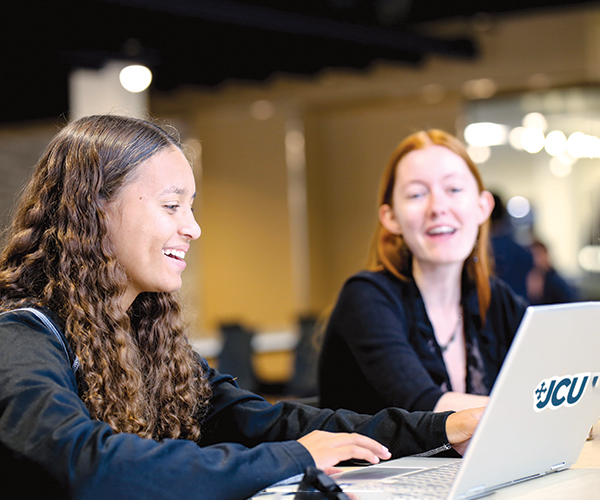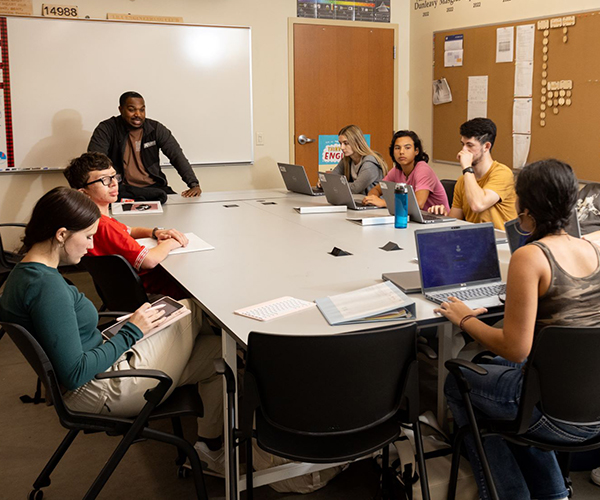How To Make The Most Of Your Private School Visit
by Marisa Palmieri Shugrue | Sep. 10, 2019 | 12:00 PM

Inevitably, some preteens and teens might just see it as a day to play hooky, but many students take these visits seriously, says Michael Suso, director of admissions at Notre Dame-Cathedral Latin School in Chardon.
“They see these visits as a predictor of what the school community will be like,” he says. And they should. Private school admissions directors agree that the best way to get to know any private middle school or high school is to spend a day on its campus.
“It’s the most tangible way to experience what your future could hold at a new school,” says Katherine Chapman, assistant director of enrollment management K-8 at Hathaway Brown in Shaker Heights.
Another reason take these visits seriously: schools may be simultaneously evaluating visitors as prospective students, says Katherine Mitchell O’Neal, Hawken School’s assistant head of school for enrollment management.
At the Cleveland school with campuses on the east and west side, student visitors are expected to follow campus rules and standards while visiting the school, O’Neal notes.
For example, a school might have a no-phones-in-the-classroom policy. “It’s one piece of the overall application,” she says. “If the student comes onto campus and is on their phone the entire time, a school would consider that.”
Gathering Intel
Before scheduling shadow days, families can start by establishing their own values around education, O’Neal says. “Every school has a mission — why they exist,” she says. “Families should be looking at that to determine whether it aligns with the family’s values around education.”
For instance, Hawken’s mission of “Purpose, Promise and Principles” is a dedication to “forward-focused preparation for the real world through the development of character and intellect.” Not just marketing jargon, these mission statements are actually a first peek into each school’s core values.
After understanding each schools’ mission, experts advise families to study vital data and technical information about applying to and attending the school.
Important details include size of the school, average class size, faculty-to-student ratio, diversity, course offerings, extracurricular and athletic offerings, graduation-to-college rate and other student performance figures like mean ACT scores.
“Schools should be preparing students for success both in and out of the classroom with college readiness being a significant focus,” Suso says. “Student performance on college readiness benchmark tests, such as the ACT, offer an important indication of exactly how a school prepares their students for the next step of their education.”
Other technical questions to ask include the steps in the application process, how to apply for tuition assistance, availability of tuition payment plans, the average financial aid award and transportation options, among others.
Private schools offer many opportunities to gather this information — and admissions staff members are ready to help as needed. In addition to a student visit during the school day, schools typically offer private family tours and various nighttime open house events.
“Our goal is to make sure families have enough information,” O’Neal says. “They should always feel comfortable in following up at any point in the process.”
Fitting In
After identifying your family’s values and evaluating the data points, consider your student’s needs and what environment will help him or her thrive, experts say.
“Parents should ask, ‘How can this school help my children become the best version of themselves?’ ” Chapman says. “That could include anything from academics to athletics to extracurricular and co-curricular offerings.”
Parents should share their child’s passions and strengths with the admissions team,whether that may be sports, arts or a specific intellectual pursuit. The admissions department can introduce the student to the appropriate faculty, advisers or coaches and connect him or her with a student host with similar interests during the school visit.
Meanwhile, prospective parents also may request to be connected to families with children who have common interests. “It’s all about providing as many different perspectives about what it’s like to be a member of our community as possible,” Chapman says.
Even consider your students’ passions and engage with those parts of a school’s community outside of admissions department-run events, O’Neal says.
For example, if your student plays basketball, attend a game to get a sense of the environment and community. “When you attend an event that’s not an admission-related event, you get a great sense of the community,” she says.
In fact, community should be a primary consideration. Parents often pay more attention to the academic programs, O’Neal says, but they should also consider how their student feels when he or she is on campus.
“When the student feels a sense of community, feels known and feels cared for, it’s the optimal learning environment for them,” she says.
Suso echoes the importance of community. While factors such as school and class size or the number of extracurricular activities and service opportunities distinguish school from one another, he says, a strong sense of community is also vital.
“A large part of any student’s high school experience centers around fostering relationships and growing together with his or her classmates, teachers and the school community,” Suso says.
Guiding Students
While parents can do their due diligence, it’s also important to hear the student’s feedback. To help students evaluate their visits to each school, encourage them to take notes about how they felt during their visit and reflect on it the same day.
“Things can get muddy when you’re a 13-year-old,” Chapman says, noting some students visit many different schools several months apart, which adds to the confusion.
Help your student create a checklist before the visit so they know what to look for. What was the student’s favorite part? Did he or she feel welcomed by the other students and noticed by the teachers? Did he or she notice anything weird, uncomfortable or strange?
Although parents may have a better understanding of student-to-teacher ratio or financial aid options, youngsters have a keen eye for details adults often overlook.
Parents also may benefit from documenting their own facts and impressions with a spreadsheet or a readymade checklist like the one offered by greatschools.org. These checklists can help parents compare apples to apples — or, demographics or financial aid options across multiple institutions — between the various schools they visit.
Some families default to allowing 13-, 14- or 15-year-old students to choose what private schools they’d like to attend, but Suso advises them to rethink this approach. Instead, he recommends a shared decision-making process that accounts for parents’ wisdom and life experiences.
“Consider what other $50,000 to $100,000 decision you allow your son or daughter to make at this point in his or her life,” he says.
Trending
-
1
-
2
-
3
-
4
-
5










